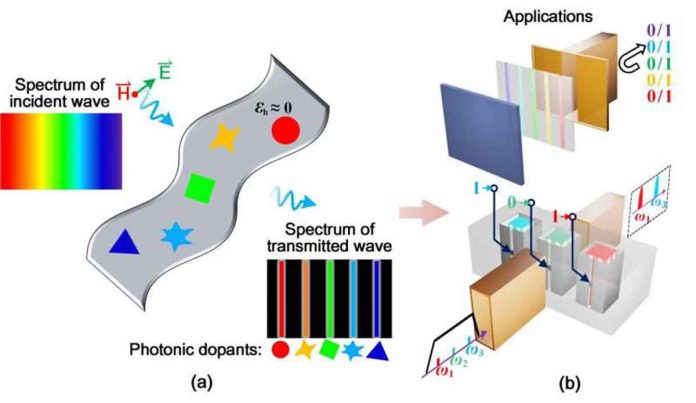Small permittivity media, also known as epsilon-near-zero (ENZ) media, have piqued the interest of researchers in physics, materials science, and engineering. In principle, the wavelength in ENZ medium is infinitely stretched, resulting in spatially static while temporally oscillating wave dynamics.
There has long been a desire to achieve flexible manipulation of ENZ media and to develop real-world applications. Metamaterials have grown in popularity in recent years, with researchers using periodically-arranged artificial units or resonators to control the effective constitutive parameters of the composite medium. However, it is unknown how an ENZ medium with multiple resonators would behave and how those resonators would interact with the ENZ background.
A team of scientists led by Professor Yue Li from the Department of Electronic Engineering at Tsinghua University, China, collaborating with the Public University of Navarre in Spain and the University of Pennsylvania in the United States, revealed an exotic phenomenon in ENZ media in a paper recently published in Light: Science & Applications.
They showed that multiple densely packed dielectric rods, known as photonic dopants, can provide noninteracting resonant modes while remaining coupled to the external environment.The behavior of these “noninteracting resonators” was unexpected and contradicted that of conventional microwave and optical resonators. Both theory and experiments demonstrated that an ENZ medium containing multiple dielectric dopants can exhibit a “comb-shaped” dispersion of the effective permeability function and that each “tick” in the frequency comb can be associated with a different dopant and can be altered independently.
For ENZ media, the scientists proposed the dispersion coding technique. By varying the presence or absence of each dielectric dopant, the ENZ medium’s responses at various frequencies can be independently controlled. The scientists demonstrated two intriguing applications of dispersion coding.
The first is optical tagging, in which different dielectric dopant combinations can represent different information series, and the second is a digitally reconfigurable comb-profiled filter. The scientists summarise the key points of the dispersion coding technique for ENZ media:
“(1) In contrast to periodic metamaterials, the effective parameter (effective permeability) of the doped ENZ medium is entirely determined by the unit cell characteristics, i.e., the dielectric dopants, rather than their positions. (2) The contributions of the noninteracting dielectric dopants to the overall ENZ medium are additive, which simplifies the design of artificial composite materials significantly.”
“Dispersion coding may one day be used for multi-frequency analogue signal processing in terahertz and even optical regimes. Because the shape of ENZ media and the spatial arrangement of dielectric dopants have no effect on the effect of dispersion coding, ultra-compact and highly-integrated devices for high-frequency signal processing and filtering can be realised “According to the scientists.

